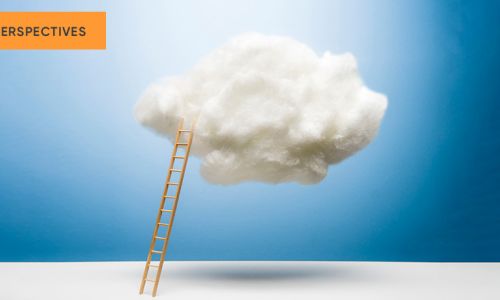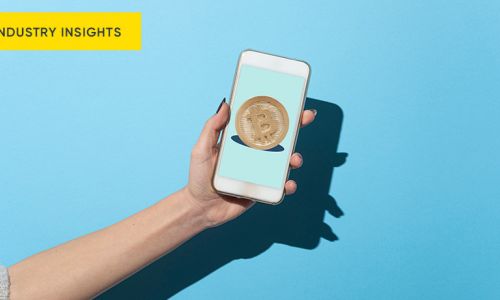The future is full of opportunities and challenges. For businesses, striking the right balance with customers in a fast-paced world is one of those enormous challenges. What customer experience future should companies prepare for?
We recently assembled leading customer experience experts Don Peppers, Joe Pine, and Olaf Hermans for a video chat to discuss the future of customer experience. Each brings a different perspective on the topic. From automation and simplicity to co-creation and distinctive personalization, they shared their visions of the connected future. Here’s an excerpt of the conversation.
What does the customer experience of the future look like from your perspective?
Don Peppers: The future of customer experience is one in which companies take seriously consumers’ rising expectations of them. Every time you get served well by Amazon or Umpqua Bank, your expectations of the next bank, or bookstore, or any experience increase. The problem that most companies have is that they don’t recognize they’re on the downward slope of these rising expectations. They think they’re keeping up. They think they add technology and therefore they’re better, when in fact, they’re declining in the customers’ eyes.
In my view, the customer experience management (“Small E” experience) discipline is very bright. Increasingly, there are examples of companies where management wants to make the experience better. But they find they’re conflicted. Their alignments don’t add up, they reward people for the wrong things, their capabilities don’t exist because they can’t even tell when a customer was on their website or called in. Their mindset is bad. As a wise sage once said, “You can’t write a line of business code to require employees to delight customers.” All of these are obstacles that companies face today. The closer we get to this as a real discipline, the more realistically companies are tackling these obstacles.
Joe Pine: Many consumers want goods and services to be commoditized so they can spend their hard-earned money and their harder-earned time on those experiences that they truly value. Because time is so important and because companies want to get to a position where customers value their time with them, you’re going to increasingly see more and more companies charging for time rather than charging explicitly for the good or the service.
You saw it already with American Girl Places—basically a doll store where inside there is a 150-seat theater with a live stage production around the dolls and they charge $33 for that experience. You can walk into an American Girl Place and spend hundreds of dollars without buying a thing. We see increasingly restaurants that are charging admission for an experience. There’s a café in London that doesn’t charge for pastries or coffee. They charge for the time you’re in the café. Why? Because that’s what customers value.
Olaf Hermans: I’m rather hopeful. A host of technologies is coming available to lift customer experience to even higher levels. The marketing function and the strategy function are being incorporated into the customer experience. It’s the only way customer experience management becomes CEO territory. Market research and customer feedback can be part of the customer experience in real time. Customer feedback is itself a customer experience.
I want to get away from the idea that people are just consumers of services, products, and experiences. Customers can become co-owners of processes through collaboration and co-creation. Customers who have a lot of goodwill can fulfill any function. They can provide feedback and interact with employees, they can co-develop products, they can engage in user communities, and so on. Basically they are the company. They are part of your organization. They are involved in different processes, but all together, they are part of THE customer experience.
It’s a more multilayered vision of customer experience management, instead of thinking of customer experience as just, “How do we sell or get people’s problems solved?”
Are these ideas too much for companies to handle?
Joe Pine: They better not be. The thing about business is that it gets tougher year after year. And only the great ones survive over decades. You have to figure out what the requirements are to continue to advance. You can never sit on your laurels or think that this is it, we can coast from here. You’ve always got to be thinking ahead and refresh your capabilities.
As Olaf said, customers are, in fact, part of your organization. You need to draw them inside of what you’re doing and allow that to take hold. That’s where the innovations of the future are going to come from. Not necessarily asking them directly what they want, because they often don’t know, and not necessarily pandering to them.
It’s about understanding the jobs they’re looking to get done and understanding what are the new ways that we can service those jobs, fulfill those jobs, and help them get what they need now and in the future.
Don Peppers: Companies need to keep up with rising consumer expectations. The kind of customer who’s going to help a business better craft its own customer experience is the kind of customer who wants that business to succeed. And what kind of customer is that? It’s a customer who is attached to the business—perhaps emotionally and almost certainly because of convenience.
With so much technology and innovation emerging, what role will human employees play as customer experience advances?
Don Peppers: The fallibility of human beings is an essential part of being trustable. It is a human quality to be fallible. There are no perfect human beings. People make mistakes. In the old-fashioned marketing world, marketers never made mistakes. Advertisers always advertised perfect brands, perfect in every way. There was never any admission of error. We’re now in a much more interactive world. We have Twitter feeds, Instagram, Facebook, and LinkedIn. People make mistakes and you see them. And you broadcast them. They become trending topics.
Any company that wants to have the trust of its customers needs to portray itself as human. And what is the first quality of being human? Fallibility. It doesn’t mean you make mistakes on purpose. But when you make a mistake, you admit it and you go forward. And customers will embrace that. They like that. They want to interact with companies that are like them, that are human.
Olaf Hermans: It’s not so much making mistakes, it’s about embracing diversity. If you really want a personal experience, a “Big E” experience, it means you’re meeting diversity. Everyone wants something in a different way.
Joe Pine: Fallibility is a sign of humanity, and humanity is a mark of authenticity. And that’s increasingly important to business. We want to buy the genuine from the real, not the fake from the phony. No matter how we interface, it’s incredibly important to be human in a digital age.
What should senior leaders consider most important as they advance their customer experience strategies?
Joe Pine: Everybody faces a strategic choice about whether they’re going to stay in manufacturing goods and services, or rise to the proposition that we can and should stage experiences. They’re not mutually exclusive. When you are selling goods or services, the “Small E” customer experience is, in fact, very important. You want to make it frictionless, you want to make it seamless, you want to make it nice and easy and convenient. But recognize that if you only go that route, you will eventually be commoditized.
I encourage companies to think about rising to that level of “Big E” experiences and realize that they can be in the business of staging experiences that are memorable, personal, and have customers view their interactions with you as time well spent. And then, you’ll be economically rewarded.
Olaf Hermans: I hope we can create relational encounters and add a cognitive layer, having a discussion with the customer about their own customer experiences. Open Pandora’s Box around design efforts so that together with customers we can evaluate what works best. Market research and customer feedback functions will be fully incorporated into customer experience process design. I think it will be really exciting to see how that is going to work.
Moreover, we must abandon the exchange logic where companies only do something for money. It is really old logic where we do all the work and the customer’s only role is to pay. We’re going to a hybrid environment where systems are being empowered with information about customers in real time. We should look at, “How can we put information and people together in a humanized encounter,” which will be really cool. The role of artificial intelligence in that will be amazing.
The most value, both for companies and customers, comes from collaborative efforts. For a time, we didn’t want the customer to do too much. Value was defined as what you get for the least effort possible. I think the definition of value is changing toward effort as a way to contribute to value creation.
Don Peppers: If I look at the future of customer experience, I have to look at the future of technology and business. If you step back and look at what’s been happening over the last 20 to 40 years with information technology, it’s very clear that products and services cost less and less, and they’re easier to deliver. Automation and algorithmic processes now deliver things for free that used to be expensive. As things get less expensive and services become more convenient, life for customers is going to become, inevitably, more frictionless—easier, faster, and more connected.
For businesses, what this means is that the single most important and valuable asset in this very frictionless, very fast-paced, highly interactive world is its customer base. Businesses need to begin focusing on customers as financial assets that represent the future of their company. It’s the customer’s memory that connects today’s customer experience with tomorrow’s business success. And until businesses really take that point of view and begin thinking of customers as their principal asset, it’s going to be dark days.






